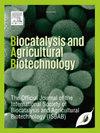从文献计量学角度看硅藻脂肪酸研究的未来趋势和模式
IF 3.4
Q2 BIOTECHNOLOGY & APPLIED MICROBIOLOGY
引用次数: 0
摘要
硅藻是重要的脂质宝库,主要储存三酰甘油(TAGs),也是多不饱和脂肪酸(PUFAs)的重要来源,包括二十碳五烯酸(EPA)和二十二碳六烯酸(DHA)以及岩藻黄素。它们在医药、食品、化妆品、水产养殖和生物燃料生产等领域的广泛应用凸显了其作为重要生物资源的价值。本研究采用文献计量学分析方法探讨硅藻脂肪酸(FAs)及其相关化合物的发表趋势,全面了解从过去到现在的研究轨迹,并指明未来的研究方向。通过分析 Scopus 数据库中 1959 年至 2023 年间发表的 2286 篇文章,我们发现美国是硅藻脂肪酸研究领域的领先国家,而法国则是成果最丰硕的机构。美国在促进国际合作方面也处于领先地位,与 41 个国家开展了合作。关键词共现分析表明,几十年来,EPA 和 DHA 在研究兴趣中占据主导地位,而三棘藻成为最常被研究的硅藻菌株。硅藻研究最初侧重于水产养殖,后来扩展到生物指标、环境和生物燃料应用领域。最近,与 FAs 结合使用的岩藻黄素和菊粉黄素在药物研究中也占据了重要地位。此外,通过转录组分析对代谢途径的探索也变得越来越重要。本研究发现了硅藻 FA 研究中的几个研究空白,为未来的研究铺平了道路。我们主张继续开展研究,以充分利用硅藻FA,将其作为生物燃料、饲料、食品和制药等关键行业的可持续生物资源。本文章由计算机程序翻译,如有差异,请以英文原文为准。
Future trends and patterns in diatom fatty acid research from a bibliometric standpoint
Diatoms are a significant repository of lipids, primarily storing triacylglycerols (TAGs), and serve as a crucial source of polyunsaturated fatty acids (PUFAs), including eicosapentaenoic acid (EPA) and docosahexaenoic acid (DHA), as well as fucoxanthin. Their versatile applications across medicine, food, cosmetics, aquaculture, and biofuel production underscore their value as a vital biological resource. This study employs bibliometric analysis to explore the publication trends related to diatom fatty acids (FAs) and their associated compounds, offering a comprehensive understanding of research trajectories from past to present, and indicating future directions. Analyzing 2286 articles from the Scopus database, published between 1959 and 2023, we identified the United States as the leading country in diatom FA research, with France as the most productive institution. The USA also leads in fostering international collaborations, engaging with 41 countries. Keyword co-occurrence analysis revealed that EPA and DHA have dominated research interests over the decades, with Phaeodactylum tricornutum emerging as the most frequently studied diatom strain. Initially focused on aquaculture, diatom research expanded to include bioindicator, environmental, and biofuel applications. Recently, fucoxanthin and chrysolaminarin, in combination with FAs, have gained prominence in pharmaceutical research. Additionally, the exploration of metabolic pathways through transcriptomic analysis has become increasingly significant. This study identifies several research gaps in diatom FA research, paving the way for future investigations. We advocate for continued research to fully harness diatom FAs as sustainable biological resources for key industries, including biofuels, feed, food, and pharmaceuticals.
求助全文
通过发布文献求助,成功后即可免费获取论文全文。
去求助
来源期刊

Biocatalysis and agricultural biotechnology
Agricultural and Biological Sciences-Agronomy and Crop Science
CiteScore
7.70
自引率
2.50%
发文量
308
审稿时长
48 days
期刊介绍:
Biocatalysis and Agricultural Biotechnology is the official journal of the International Society of Biocatalysis and Agricultural Biotechnology (ISBAB). The journal publishes high quality articles especially in the science and technology of biocatalysis, bioprocesses, agricultural biotechnology, biomedical biotechnology, and, if appropriate, from other related areas of biotechnology. The journal will publish peer-reviewed basic and applied research papers, authoritative reviews, and feature articles. The scope of the journal encompasses the research, industrial, and commercial aspects of biotechnology, including the areas of: biocatalysis; bioprocesses; food and agriculture; genetic engineering; molecular biology; healthcare and pharmaceuticals; biofuels; genomics; nanotechnology; environment and biodiversity; and bioremediation.
 求助内容:
求助内容: 应助结果提醒方式:
应助结果提醒方式:


